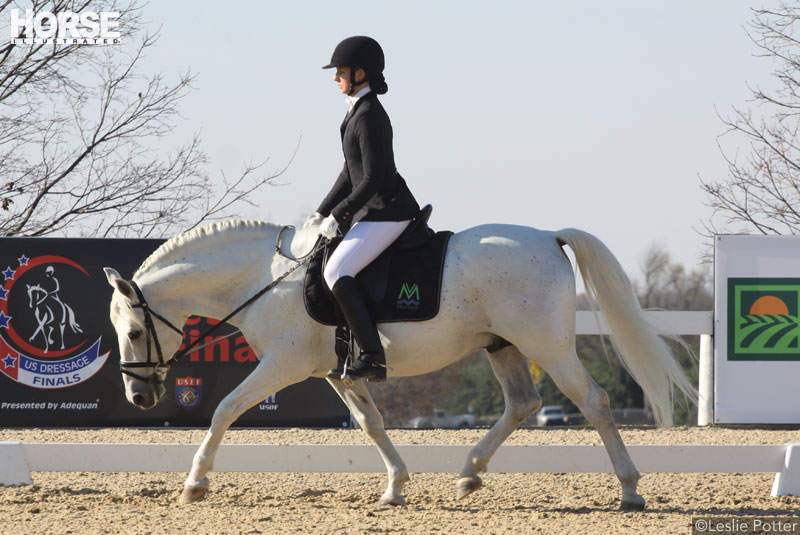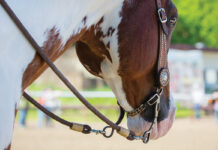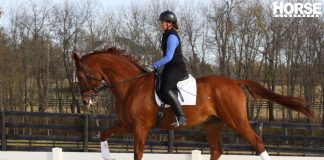When a horse is ridden too long in a collected or working frame the muscles that stabilize his neck begin to build tension and over-tighten. This prompts his long back muscles– which are designed for creating movement, not for stabilizing the skeleton—to take over and attempt to play the role of stabilizing while also transferring motion from the hindquarters through his back. Since muscles cannot play this dual role, the result is a buildup of tension. The horse ends up trotting or cantering around with muscles doing tasks they were not designed for and the resulting decrease in oxygen and blood to keep them supple.

When riders stretch their horses’ necks forward and downward for a few circles before resuming a working frame, they often notice their horses moving with springier, looser gaits. This elongation of his topline muscles flushes out lactate (metabolic waste that creates stiffness and heat) and delivers blood and oxygen to these big prime movers. Moments of stretching throughout your work session are necessary to develop the fullest and most elastic range of motion in your horse’s gaits. Varying your horse’s posture through workouts preserves spacing between vertebral joints, delivers fuel and oxygen to muscles for proper contractions, and ensures that each muscle system continues to do the job it was designed for. One group should stabilize the skeleton and support its soft tissue while the other muscle group creates movement. When one group tries to take over a different role because of tension buildup, the horse ends up working in opposition to himself.
Liked this article? Here’s are others you’ll enjoy:
Dressage Challenge Part I: Arena Workout
Safe Conditioning
JEC ARISTOTLE BALLOU is the author of 101 Dressage Exercises for Horse & Rider.






great info
Makes sense.
Excellent article and explanation. It is something I convey to my students often, but I appreciate the reminder to say it again. Thank you writing about something that makes horses more capable and happy!
It is so important that a time period is attached. Like change every 10 minutes. It helps so much more than “don’t ride with your horse in one body position all the time”.